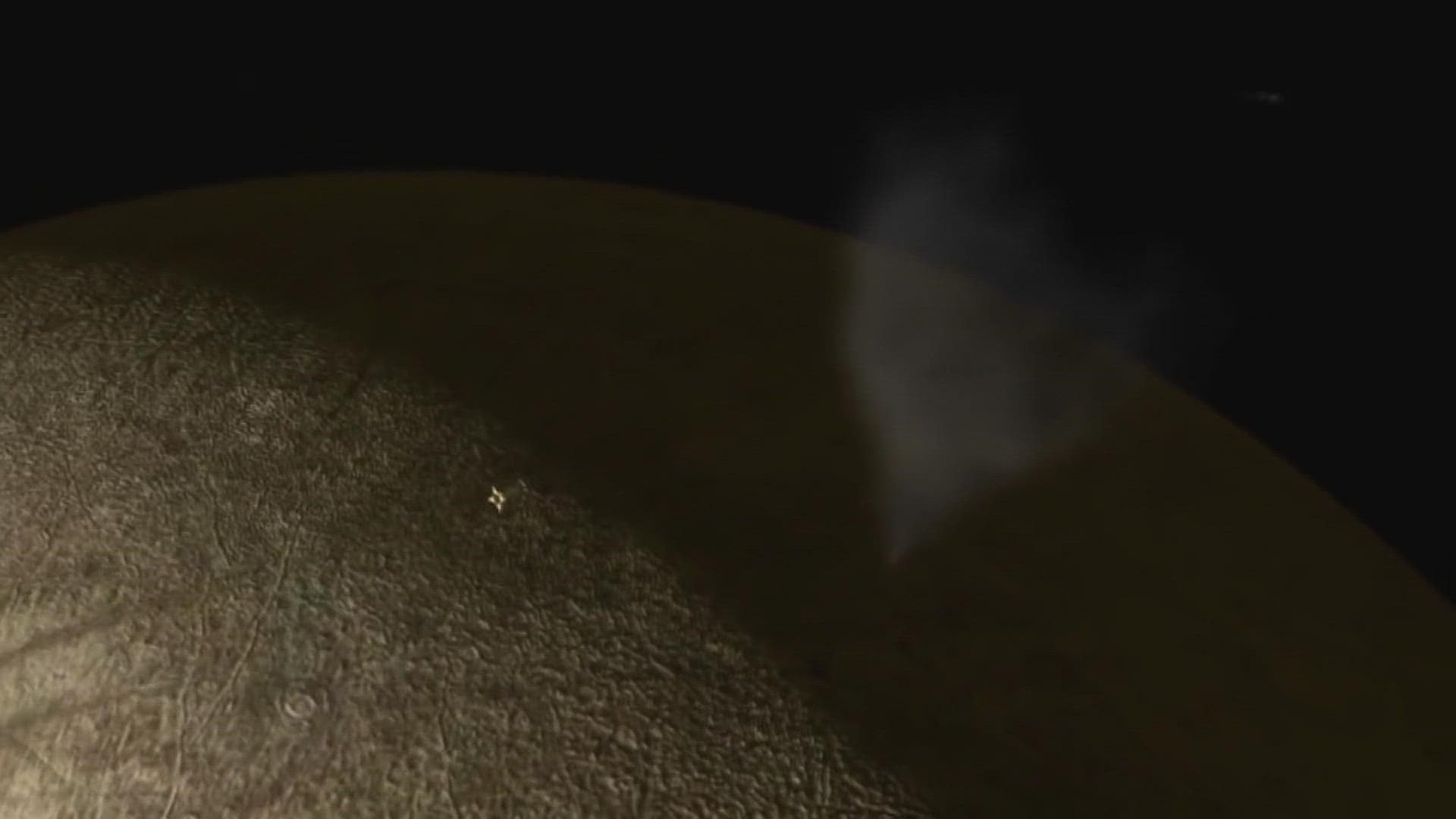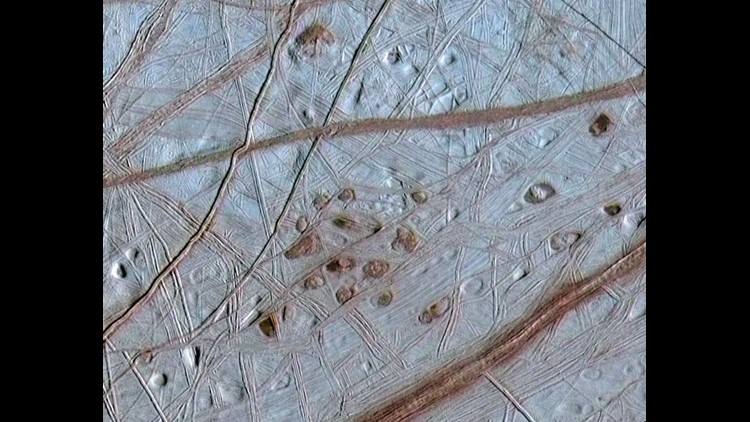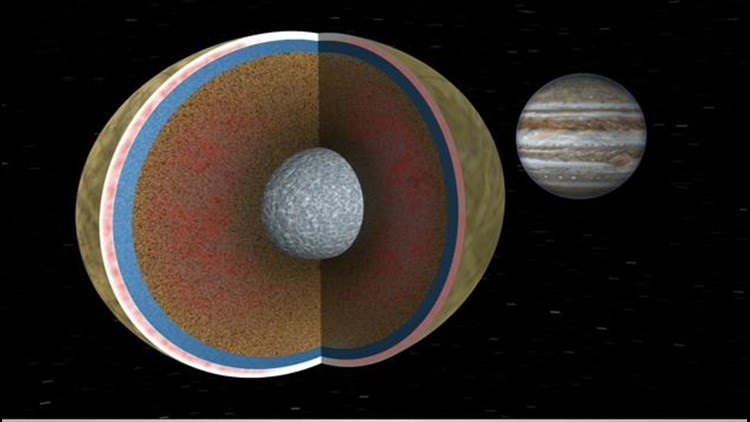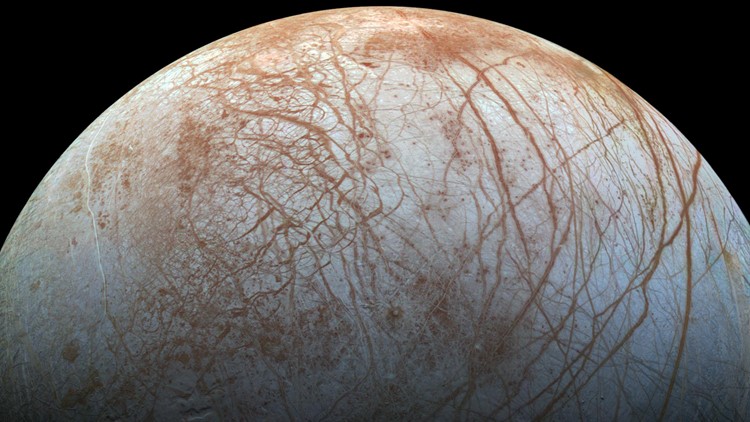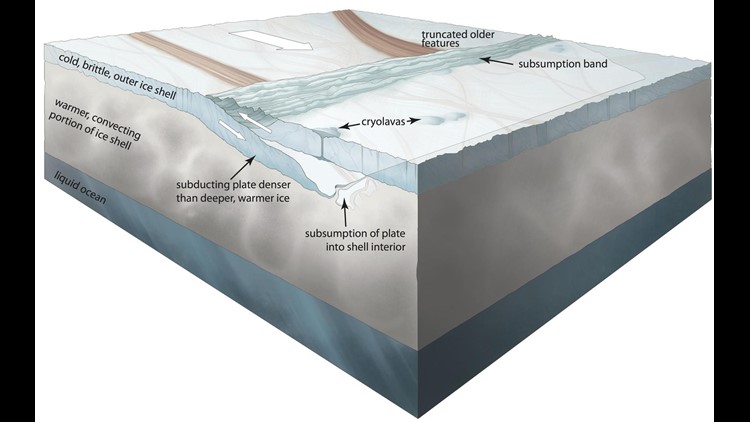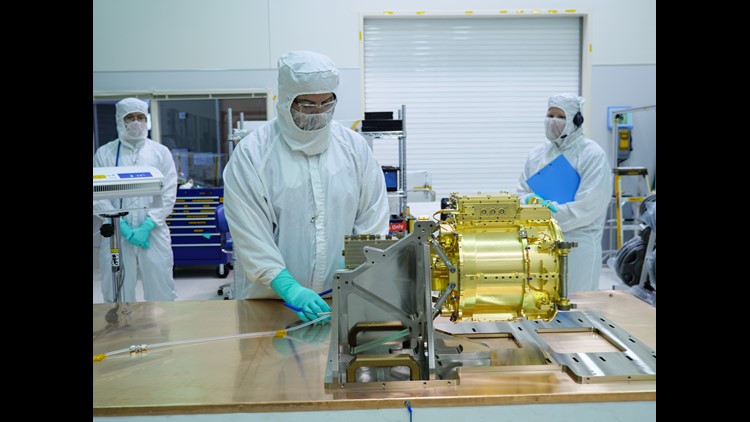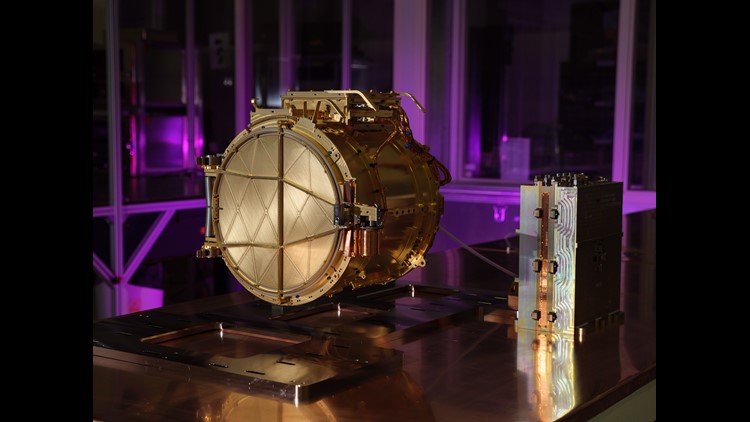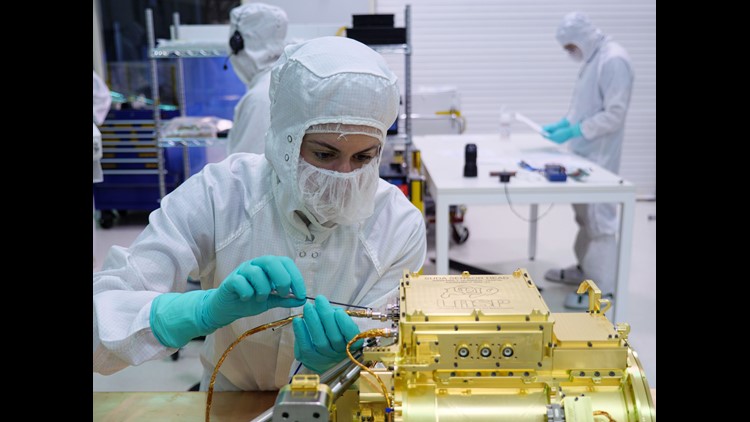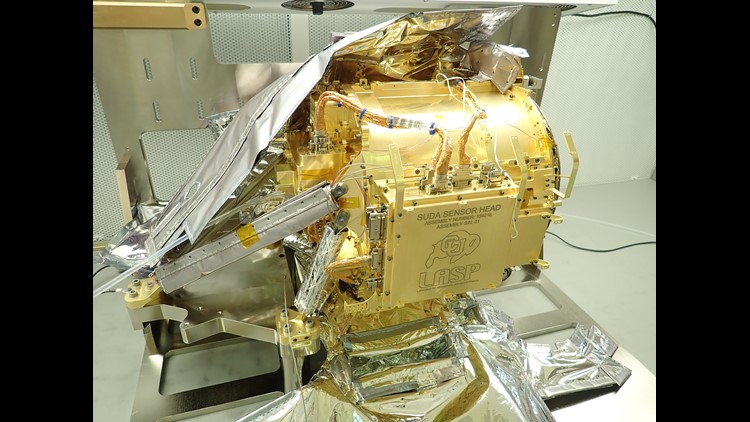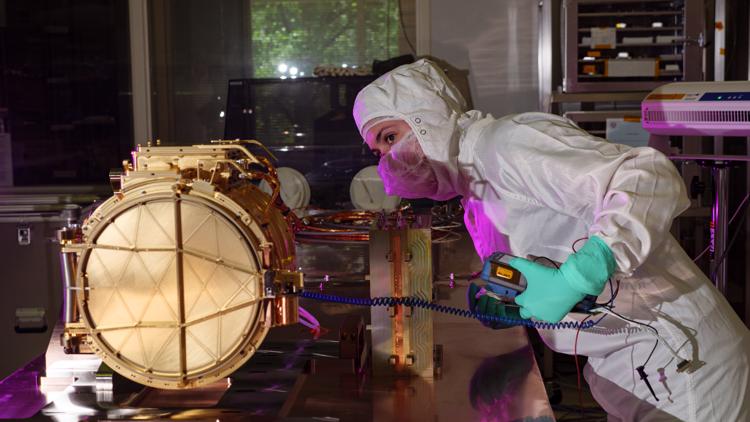BOULDER, Colo. — The search for life beyond planet Earth is one of NASA’s main objectives, and their next target of interest is Europa -- the icy moon of Jupiter.
Europa is about the same size as our moon, but scientists believe that underneath its scarred icy shell, it has more water than planet Earth.
“There’s about 30 kilometers of ice and there’s an ocean below that and then there’s a rocky core," said Scott Tucker, an aerospace engineer at the Laboratory for Atmospheric and Space Physics (LASP) on the University of Colorado campus in Boulder. "Those things put together make it a very interesting target from a habitability point of view.”
Europa's stunning geology
Tucker said the presence of water is one of three main traits they look for when targeting worlds that have the potential to support life. Another trait is a source of energy.
He said Europa is too far from the Sun to allow solar radiation to have much of an impact, but its elliptical orbit around Jupiter is the key in this case.
"The large gravitational field of Jupiter actually flexes the moon Europa as it moves close and then again as it moves farther away," said Tucker. "That flexing heats up its core which keeps the liquid ocean liquid, and so we know there's heat there."
The other trait that Europa needs to support life is chemistry. And that is the part of the equation that is relatively unknown, thus the purpose of an exploration mission.
The mission to explore Europa is scheduled to launch in 2024. It will be a solar powered Jupiter orbiter that NASA calls the Europa Clipper. It's not a fancy scientific acronym like you often see on spacecraft missions -- it's named after the sailing vessel known for its numerous and majestic sails.
The Europa Clipper will carry nine scientific instruments that will investigate Jupiter's moon while doing several high speed fly-bys. NASA considers it one of their flagship missions, so it takes some priority over resources and funding.
One of the instruments onboard was designed and built at LASP in Boulder. Its focus will be to research the chemistry of Europa by analyzing its dust, and do it without landing on the moon's surface.
They call it the Surface Dust Analyzer (SUDA).
Jupiter probe built by aerospace engineers at CU Boulder.
"So it’s kind of like nature is sandblasting the material off the surface,” said Bill Goode, and aerospace engineer and PhD candidate assigned to the SUDA project. "All we had to do is figure out a way to swoop in and collect it."
Goode said there is a regular bombardment of micrometeorites that create a constant cloud of dust around Europa. Each impact can produce close to a billion airborne particles.
He said that the Europa Clipper will make about 50 passes as close as just 15 miles above the moon's surface.
"The point at which we will intercept these particles is called the turnaround point," he said. "So the particles are reaching the very apex of their trajectory before they fall back towards the surface. That's when they are moving the slowest, and that's the best time for use to intercept."
The particles will enter the SUDA instrument at nearly 5 kilometers per second, where a quick and complex analysis begins. It will be able to identify every tiny compound to reveal the true geologic chemistry of Europa.
Goode said each particle will be partially ionized by SUDA, where the energy essentially strips the electrons off of their components. Then the charged ions get directed towards the ion sensor in the back of the instrument.
SUDA then compiles what's called a time-of-flight mass spectrum.
"The lighter ions will arrive before the heavier ions," said Goode. "And since we know that the ion's mass corresponds to its chemistry, a series of peaks in the time-of-flight mass spectrum can tell us exactly what each particle is made of."
The SUDA team says if the building blocks for life do exist on Europa, they will find them, but it will take time. If the Europa Clipper hits its target launch date in 2024, it will still take six more years to reach the Jupiter system.
SUDA was completed in late August and will now be shipped to the Jet Propulsion Laboratory in California to be attached to the Europa Clipper spacecraft.


Behind the electrical box on SUDA, the team engraved the names of 148 students, staff and faculty that worked on the 7-year research, design, and construction of the instrument.
“Years down the road, we may discover something that could change the way we see ourselves in the universe.”
SUGGESTED VIDEOS: Latest from 9NEWS

